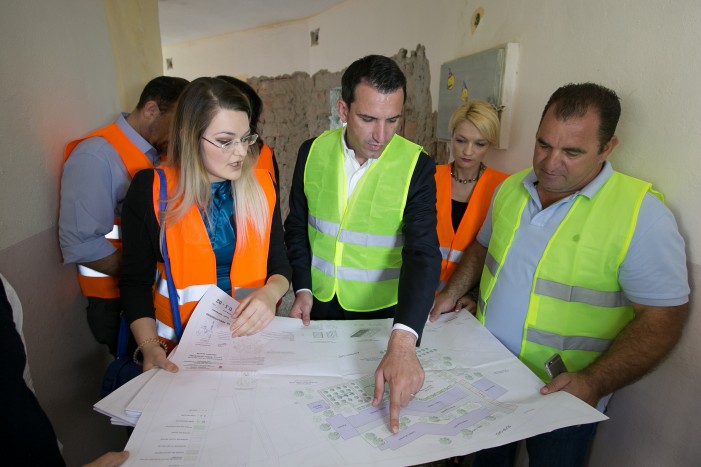
In a long article last week I emphasized that the municipality of Tirana followed the model of other institutions in the country by engaging in public-private partnership (PPP) projects, independent of the economical damage these cause. Until that moment it was only known that the municipality would pay through installments for the construction of schools.
As I explained, this is a form that is similar, but less valuable, than investments made by means of public debt. Anyhow the specific type of construction that the municipality had in mind remained unclear at the time.
During a presentation on December 21, the Director of Economic Affairs of the Tirana Municipality, Enkelejd Musabelliu, gave more details about the PPP scheme, stating that:
Taxes will be used to finance a public-private partnership scheme for the construction of 17 new schools in the capital. Private partners will build with their funds 17 schools. At the moment of the handover of the constructed objects, the municipality will pay the first installment with money gather by the tax for educational infrastructure, and so on for 7 years, as long as this tax will stay in force.
First, it has to be emphasized that even after this declaration the public still lacks concrete information; in such contracts, as is often said, “the devil is in the details.”
Second, my criticism toward this arrangement, as I expressed before, remains completely valid. This type of initiative can be very well financed through the regular form of public debt, which is incidentally also the most precise and trustworthy form.
To understand why, I first have to emphasize that the interest rates paid by the Albanian state on public debt are significantly lower than the interest rates paid by private enterprises. This is even more the case today for Albania and the rest of the world.
More concretely, the interest rate that the government needs to pay for a 12-month bond is 3.02%, following the most recent auction. This rate is in fact slightly higher than the annual average because in December there is always less interest of the banks in government bonds, thus producing a slightly higher interest rate on bonds.
From the other side, this interest rate is significantly lower than the average 12-month interest rate on credit for company, which, according to the latest data of the Bank of Albania, is 6.8%.
If a construction company would undertake the construction of a school, the payment for which will be stretched out over a long period, it will definitely need to finance this investment through bank loans. As a result, the companies that will take part in the PPP construction, will only do so if the total payment of the municipality were larger than the total of the investment plus the interest the company will have to pay to the bank during the time in which the municipality pays back the investment to the company.
So it is completely unclear why the municipality needs to take such as initiative, if the interest rates that the state would have to pay for a similar investment or more then twice as low!
This brings me to think that the public still hasn’t been told the truth by the municipality. One possible explanation can be that this scheme is used to make higher payments for construction work than the market price, thus creating the possibility of corruption.
Another explanation, which is similar to the PPP schemes currently used by the state, is that this scheme will bring other, currently unknown, perks to the construction companies.
But what is very clear is that the concession scheme for the construction of schools proposed by the municipality is completely inexplicable from the viewpoint of public finances. It throws out a method used around the world for the financing of public infrastructure and in the end places the additional burden on the shoulders of the taxpayer.

